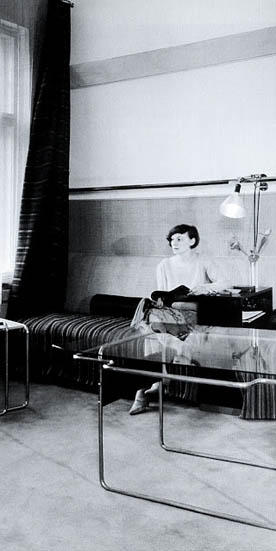Artificial Ruins. On the Photographic Remains of the Utopian Object

Beginning in 1923, a small group of prominent Bauhaus artists left their studios and began making works of art in and for industry. Josef Albers (1888–1976), Marcel Breuer (1902–1981), Anni Albers (1899–1994) and others worked alongside airplane manufacturers, glasscutters, optics engineers, and rotary press operators, learning how to employ the latest industrial materials and techniques, including prismatic glass, tubular steel, and viscose-based textiles. Though art historians have long assumed this turn to industry to be a product of economic necessity, anticipated by the inflation of 1923, the dissertation argues that the issue is considerably more complex: drawing on the idea that mass production strips the object of any regional and even national attributes, outfitting it for a universal consumer, Bauhaus artists appropriated the materials of mass production in order to realize a project of utopian objecthood. Shaping such materials in the language of avant-garde abstraction, these artists designed objects that called forth a universal, anonymous subject suited to the new post-imperial, cosmopolitan Germany.
These works were all “utopian” in that their formal characteristics drew from no single aesthetic tradition; they belonged to no place in particular. And yet, once installed, each existed in a specific site, riven by the history of that place and its inhabitants as well as the exigencies of contemporary Weimar politics. The dissertation focuses on three of these in situ commissions, each of which constitutes a major work of art: stain-glass windows by Josef Albers for the Ullstein Verlag in Berlin-Tempelhof; metal furniture by Marcel Breuer for the Berlin apartment of the Communist theater director Erwin Piscator; and an innovative wall-covering by Anni Albers for the Bundesschule des Allgemeiner Deutscher Gewerkschaftsbund in Bernau, just outside of Berlin. In each case, artists committed to an aesthetic of universality had to navigate the particularities of place.
Since all three works of art no longer exist, having been destroyed either by the National Socialists or during the bombing of Berlin in World War II, the research relies on the history and formal qualities of the particular site in which they were located. The author also draw extensively on drawings, sketches, diagrams, blueprints, maps, and floor plans, as well as written documents, many of which remain unpublished—correspondence, eyewitness descriptions, travelogues, diaries, and manifestos. A large part of the research entails examining original works of art, such as the portable “glass pictures” that Albers created in the three years before his Ullstein windows. Following what Ernst Bloch called the “hermeneutics of the trace,” the methodology locates in these fragments of the past the now lost sites and spaces of early twentieth-century abstraction.
Researcher: Jordan Troeller
